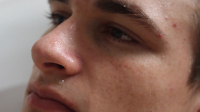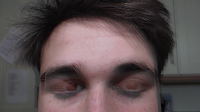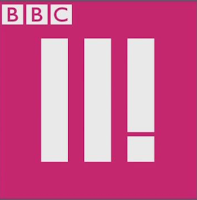,
I decided to do some research into the layout of CD Album front cover design. I thought this would be relevant because some artists sell their music based either on their name, because it is more recognisable, or the title of the album. I wanted to look at a variety of artists who produce different types of music. Looking at the bands and artist, Justin Timberlake, Eminem and The Script I saw a range of designs that are set up completely differently from one another. Justin Timberlake's front cover heavily release on the min image, he uses this to structure his front cover and uses his initials 'J' and 'T' for his name and the release date as the subheading. The title of the album is written in the smallest font.
Similar to the previous front cover, Eminem positioned his name in bold, capitalised font, centralised in the centre of the front cover. Although the name of the album is positioned directly under the artist name, the visual point in this front cover is the name of the artist. The black font contrasts with the lighter background, foregrounding the name of the artist.
The front cover designed for the band 'The Script' for the album titled 'science & faith' has a main image that becomes the visual point in the album. The main image of the hands and the text written above it is centralised. The enlarged image doesn't fill out the front cover, this enables the audience to look at the image and then secondly at the title of the band. there is a different font sued fro the title of the band and the name of the album. 'SCRIPT' is foregrounded and is the boldest font on the front cover, the trademarked name enables the audience to recognise that the album belongs to the band.
Similar to the previous front cover, Eminem positioned his name in bold, capitalised font, centralised in the centre of the front cover. Although the name of the album is positioned directly under the artist name, the visual point in this front cover is the name of the artist. The black font contrasts with the lighter background, foregrounding the name of the artist.
The front cover designed for the band 'The Script' for the album titled 'science & faith' has a main image that becomes the visual point in the album. The main image of the hands and the text written above it is centralised. The enlarged image doesn't fill out the front cover, this enables the audience to look at the image and then secondly at the title of the band. there is a different font sued fro the title of the band and the name of the album. 'SCRIPT' is foregrounded and is the boldest font on the front cover, the trademarked name enables the audience to recognise that the album belongs to the band.



































